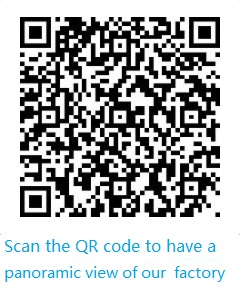Benefits and Applications for Photochemical Etching
Benefits and Applications for Photochemical Etching
This is also known as photochemical machining, an uncommon subtractive machining process that is capable of shaping metal workpieces through photographic and chemical techniques. The photochemical process is done by exposing the material to a chemical solution and selectively corrode areas to attain desired design of the workpiece. Shenzhen Yanming Plate Process Co., Ltd. manufactures the best metal etched components. The company provides a highly accurate manufacturing process suitable where high precision of metal parts is required.
Photochemical Etching Advantages
Photochemical Etching has numerous advantages. Compared to other conventional machining processes, it is cost-effective and faster to produce. The process is capable of producing parts with high precision that other conventional machining techniques are incapable of and inherently burr-free. Photochemical Etching has thickness limitations. For most materials, photochemical Etching can only effectively process materials with 2mm thickness and 6mm for copper. In the process, it generates a large volume of chemical emissions. If not handled properly, it can be a harmful effect on the operator and environment.
Photochemical Application
Photochemical etching products are suitable in industries where high precision of part is required, such as:
Aerospace components
Aerospace devices such as radar and telescopes use the photochemical product. It is also used for Aerospace components with a thickness of 0.0005" to 0.062" while other conventional processes are incapable of processing.
Medical
They are usually utilized in medical equipment and microscopes.
Electronics
They are used in circuit boards, battery components, cell phone parts and electronics gaskets, and other products requiring an exact fitting enclosure.
Decorations
Examples are jewelry with complicated and intricate designs.
Photochemical Etching Procedures
The primary procedures involved in photochemical Etching are:
- Photo-tool Plotting
The first procedure by which the design is drawn using Computer software is then turned into a suitable file format. In photo-tool plotting, certain tolerances must be considered.
- Material Preparation
Subsequent to selecting the right type of material, the material/workpiece is shaped and cleaned. This is to ensure no foreign material is gathered from the previous process. There are two types of cleaning, mechanical cleaning, and chemical cleaning. Chemical cleaning is more efficient because mechanical cleaning typically damages the material/ workpiece. Chemical cleaning is a process wherein the material/workpiece is submerged in a chemical solution. Mechanical cleaning is done by scrubbing material manually or mechanically.
- Photoresist Coating
This is the process of adding photoresist coating to the different regions of the workpiece. Photoresists are light-sensitive. When exposed to Ultraviolet rays, the coating becomes soluble or insoluble. It serves as the protection of material against etching chemical solution, leaving the coated regions behind. In this process, the photoresist regions are either exposed or protected by the photo-tool.
- Soft Bake
After the application of photoresist coating, the material is directly baked to vaporized the remaining solvents. The process‘s temperature must be monitored as a high evaporation rate can generate bubbles and soon create void space in the photoresist coating.
- Alignment
Always check the photo-tool alignment, especially for multi-layered patterns.
- Exposure
The exposure process is usually done using ultraviolet waves at different wavelengths. In this process, the wavelength is controlled as the photoresist material only react at a certain wavelength. Listed below are some of the photoresist techniques:
Contact Exposure – A technique with 1:1 image scaling. In this process, the uniform light intensity is required. Faster and relatively simpler compared to other techniques because the workpiece is exposed.
Proximity exposure – Similar to Contact exposure, they both follow 1:1 image scaling. Suitable in textured substrates that space between mask and photoresist material is required.
Laser Direct Imaging - A process where photo-tool is no longer required. It uses a laser beam to expose regions on the photoresist pixel-by-pixel directly.
- Post Exposure Bake (PEB)
PEB is an optional procedure that can be achieved by exposing the material to a certain temperature. Temperature variation depends on the type of phot-resist used. In some materials, PEB is a necessary procedure as it completes the photoreaction initiated by the Exposure process by thermally yielding the chemical reaction.
- Developing
Developing is a process where tight precision in time and temperature is required due to photoresist sensitivity. The photoresist is submerged into a developer, usually an alkaline solution for positive photoresists and organic solvent for negative photoresists.
- Hard Bake
This phase involves the removal of the solvent, water, and other chemicals. The hard bake procedure is usually done by washing the material with distilled water and blow-drying. After the drying process, it is exposed to high temperatures. This process aims to guarantee the material‘s thermal, chemical and physical stability for the proceeding processes.
- Etching Process
A process where the unprotected regions are removed using chemical agents or solutions, leaving the designed product behind. There are two types of an etching process, the wet and dry Etching.
- Photoresist removal
After the etching process, after completing the desired material design, the photoresist material is then removed. The process must be done as quickly as possible. This can be done by using different varieties of solvents such as Acetone.







